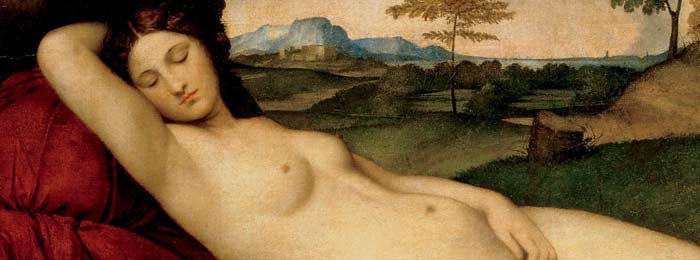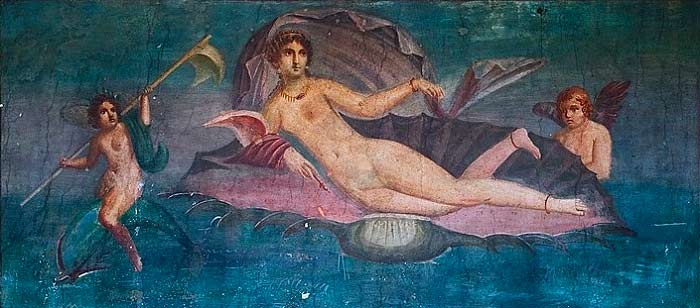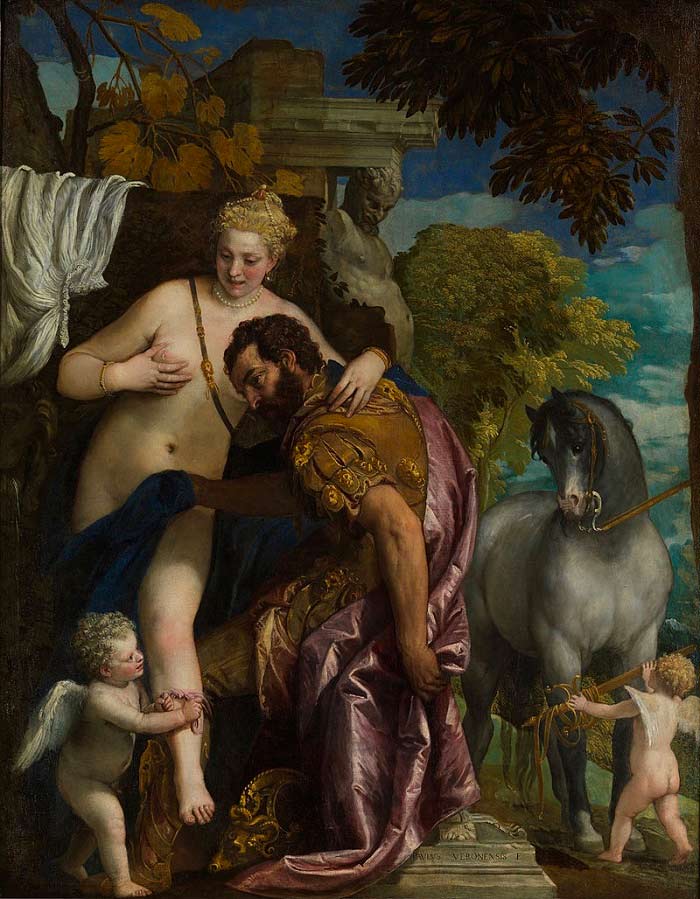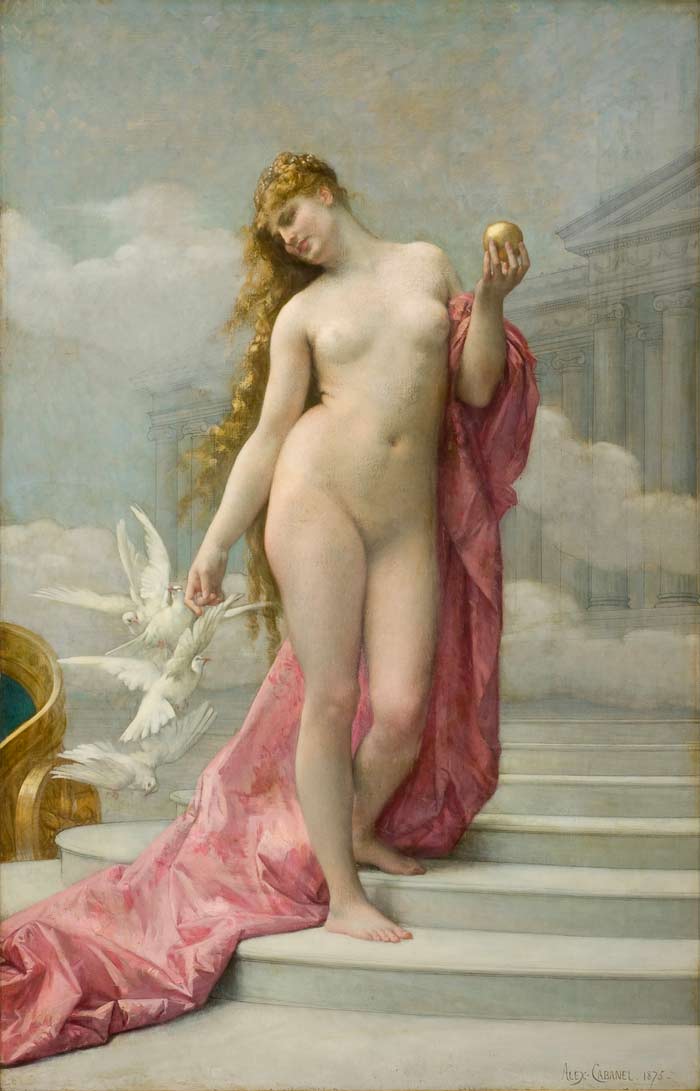When Venus tells the Story of Art

Articke by Jimena Escoto
No matter which era of the western history of art you study, mythological scenes are present. That is why a great way to navigate through the evolution of art is by studying the same subject as it has been depicted across time and space. One of the most popular deities of the Greco-Roman pantheon is Venus or Aphrodite, the goddess of love, sexuality, fertility, etc. She is the protagonist of a vast number of stories regarding the gods and the mortals. For example, the love triangle between her, Mars and Vulcan, her interference within the Homeric epics, and her manipulation of Dido and Aeneas.
Around the 4th century BCE, Praxiteles created the Aphrodite of Knidos. It became one, if not the first, representation of a nude woman in life-size; a highly important innovation considering that it occurred three centuries later than the male nudes.

It became so popular that it was used as a guide to female proportions and dozens of copies were made until the Romans. Her pose indicates some sense of modesty, having just gotten out of her bath, thus the name of Venus Pudica. It is like she knew that at her time, female statues were not depicted without clothes.
The ancient city of Pompeii was the home of several frescoes with the goddess as a subject. There are examples of the 2nd and 4th styles of Roman wall painting.

With the development of Christianity, nude figures came to be, evidently, forbidden. Nonetheless, we can find some images with her dressed in contemporary fashion. However, as Europe started to change, so did art and the nude figures came back.
One of the most famous paintings is the Birth of Venus by Sandro Botticelli.

It shows Venus at the center as she comes out of the water on a shell. Even though its proportions are not exactly right; i.e. her neck is too long and her left arm seems too loose, it is a beautiful painting, one that only has precedents in classical antiquity.
After Botticelli, every artist wanted to paint Venus. One of the most frequent themes is her relationship with the God Mars, as it represents the victory of love versus war in a time when the European powers were battling with each other for religious beliefs.
The painter Veronese shows the meeting of the two lovers in a mannerist style. The horse being tamed by one of the lovers emphasizes love’s triumph.

A century later, the Flemish painter, Rubens, created a number of works with Venus as the protagonist. His baroque style makes his compositions be full of movement, color, and his “Rubenesque” silhouettes.

The neoclassical era wanted to retake the original ideals of classical art without all the complexity of the Baroque.
Jacques Louis David chose as his last painting the figure of Venus to make a statement.

He declared, “It is the last of the paintings I want to do, but I want to surpass myself in it. I will inscribe it with the date of my seventy-fifth year, and after that I never want to touch a brush again.” Although he was in exile and aware that Neoclassicism was not the preferred style anymore, he sent it in 1822 to the Salon de Paris.
As David knew, the 19th century was moving on, but Venus stayed. William Bouguereau took Boticelli’s subject and translated it into his academic style. We see Venus being transported on a shell surrounded by putti, Cupid, Psyche along with Nymphs and centaurs.

Another artist is Alexandre Cabanel who depicted Venus being born, only this time she is laid down above the sea while putti fly over her.


We can go on and on talking about Venus and art, not just in painting and sculpture, but in every art form: ballet, opera, literature, theater, you name it! Venus is everywhere.
To learn professional drawing techniques,
- Receive 15 new videos monthly (45 in total)
- Incredible discount – $4,164
- Bonuses - Fine Art eBooks and Videos
- Drawing Academy Diploma of Excellence after course completion in 3 months
- Personal coaching by Drawing Academy Tutors
- Lifetime membership. Free after the 3rd month
- Immediate access to all 45 video lessons
- Incredible discount – $4,198
- Bonuses - Fine Art eBooks and Videos
- Drawing Academy Diploma of Excellence after course completion in 3 months
- Personal coaching by Drawing Academy Tutors
- Lifetime membership. No more payments


This Post Has 0 Comments